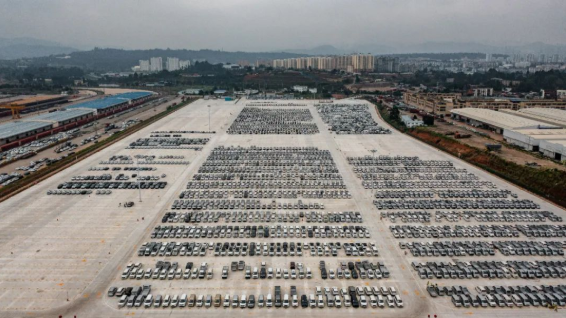
In a significant development for the automotive logistics industry, a new railway-specific cargo base, the Taohua Village Railway Automotive Logistics Base, commenced operations in Kunming on July 5.
Vehicles from eight provinces and regions including Shandong, Sichuan, and Guangdong have been transported by railway. They are prepared to be sold to 16 prefectures and cities in Yunnan province, as well as countries in South Asia and Southeast Asia.
Situated in the western suburbs of Kunming, the Taohua Village Railway Automotive Logistics Base spans an impressive 267 acres, with a warehousing area of 150,000 square meters. This large-scale facility integrates various functions such as vehicle transportation, inspection, and storage. It is estimated that it will handle over 200,000 commercial vehicles annually.
“We are currently actively assessing customer demand and conducting in-depth market research. Through the China-Laos Railway, we aim to deliver commercial vehicles to Southeast Asian countries like Laos and Thailand. This initiative will enhance our trade services, stimulate import and export activities, and contribute to overall economic development.” Commented Zhang Jun, secretary of the Taohua Village Party Committee and an official at the Kunming Railway Division of China Railway Kunming Group Co., Ltd.
The specialized railway freight cars used for automotive transportation have double-decked carriages, capable of accommodating between 8 and 14 automobiles. Utilizing the railway transport system eliminates the need for car reverse or transfers during the journey, as the vehicles remain securely enclosed within the carriages, protected from exposure to the sun and rain.
The Taohua Village Railway Automotive Logistics Base construction project is a critical support initiative for Yunnan province to become the radiating center for South and Southeast Asia. It also serves as a significant measure to promote the shift from road to rail transportation and address the "last-mile" challenge in railway logistics. The project holds vital significance in enhancing overall transportation capacity, improving logistics efficiency, and reducing transportation costs.